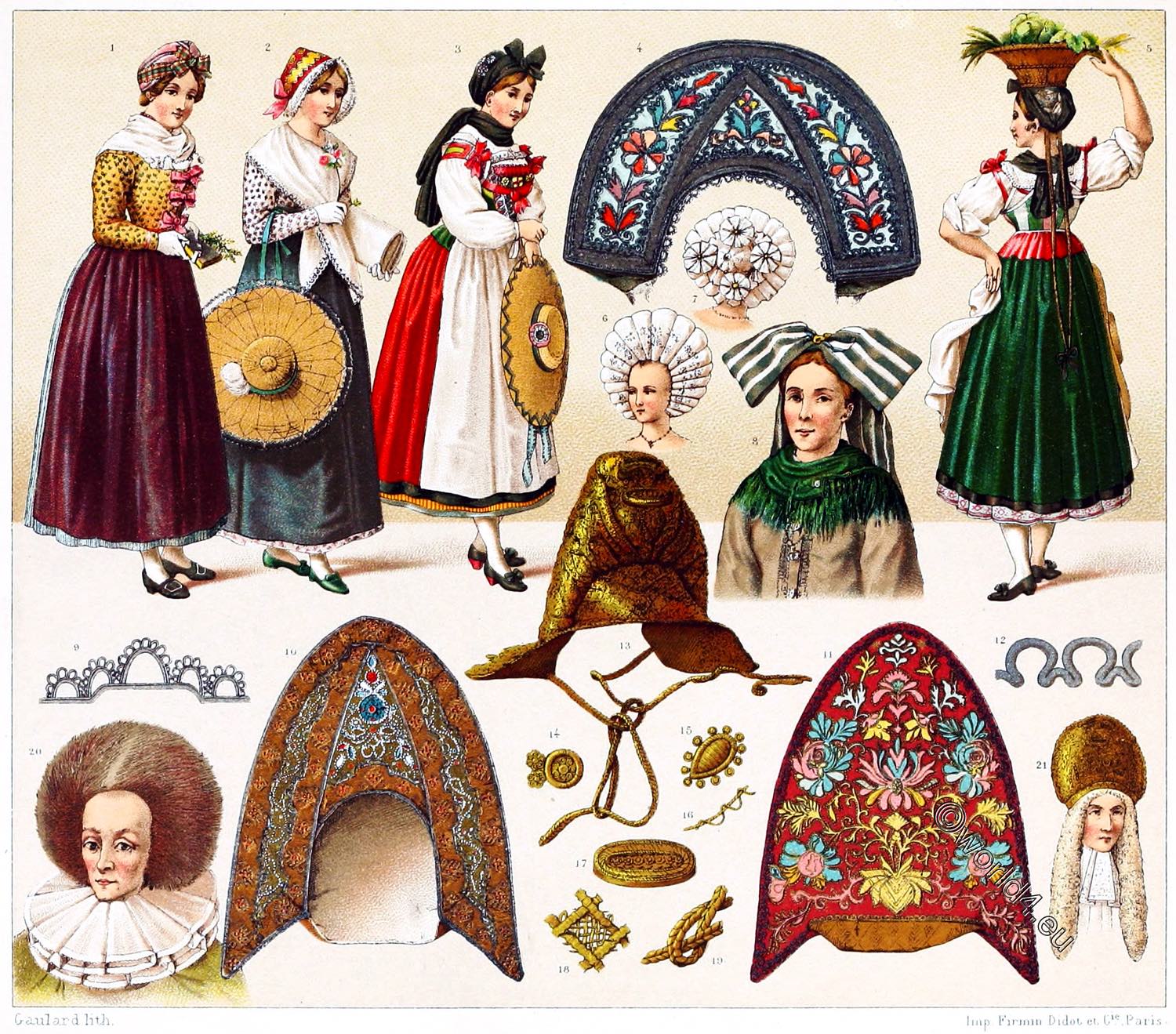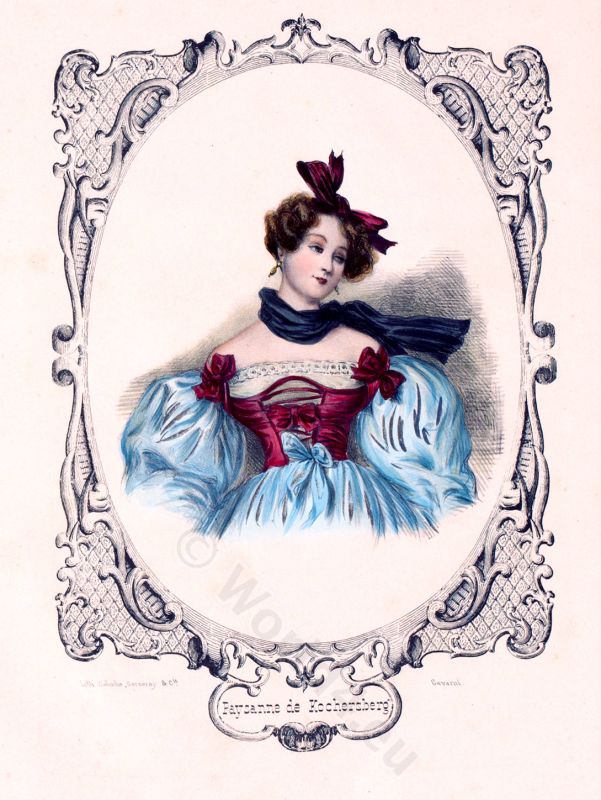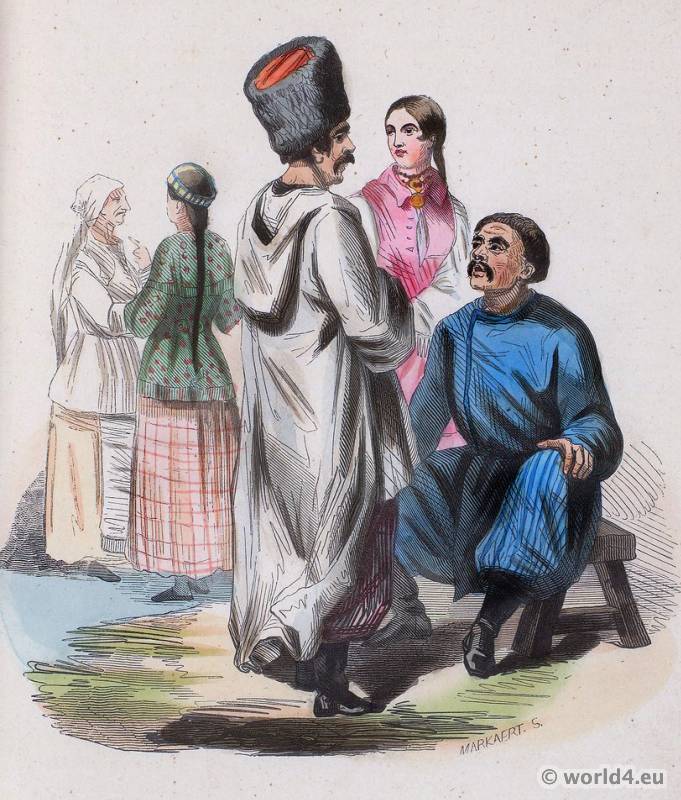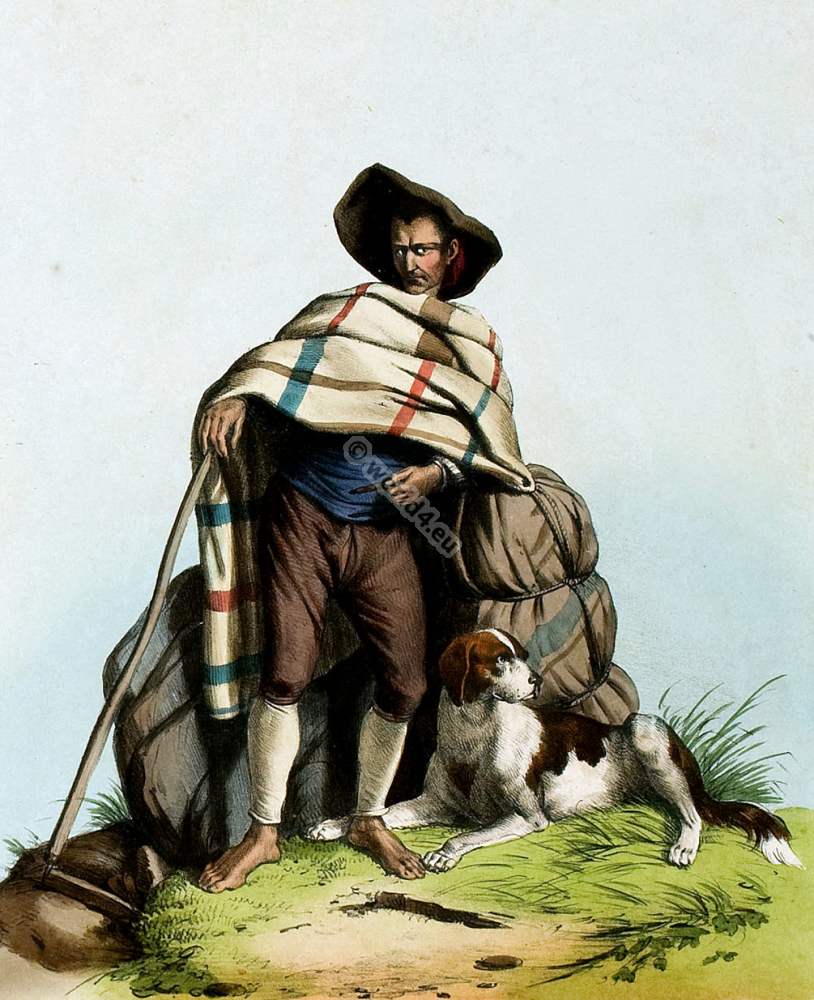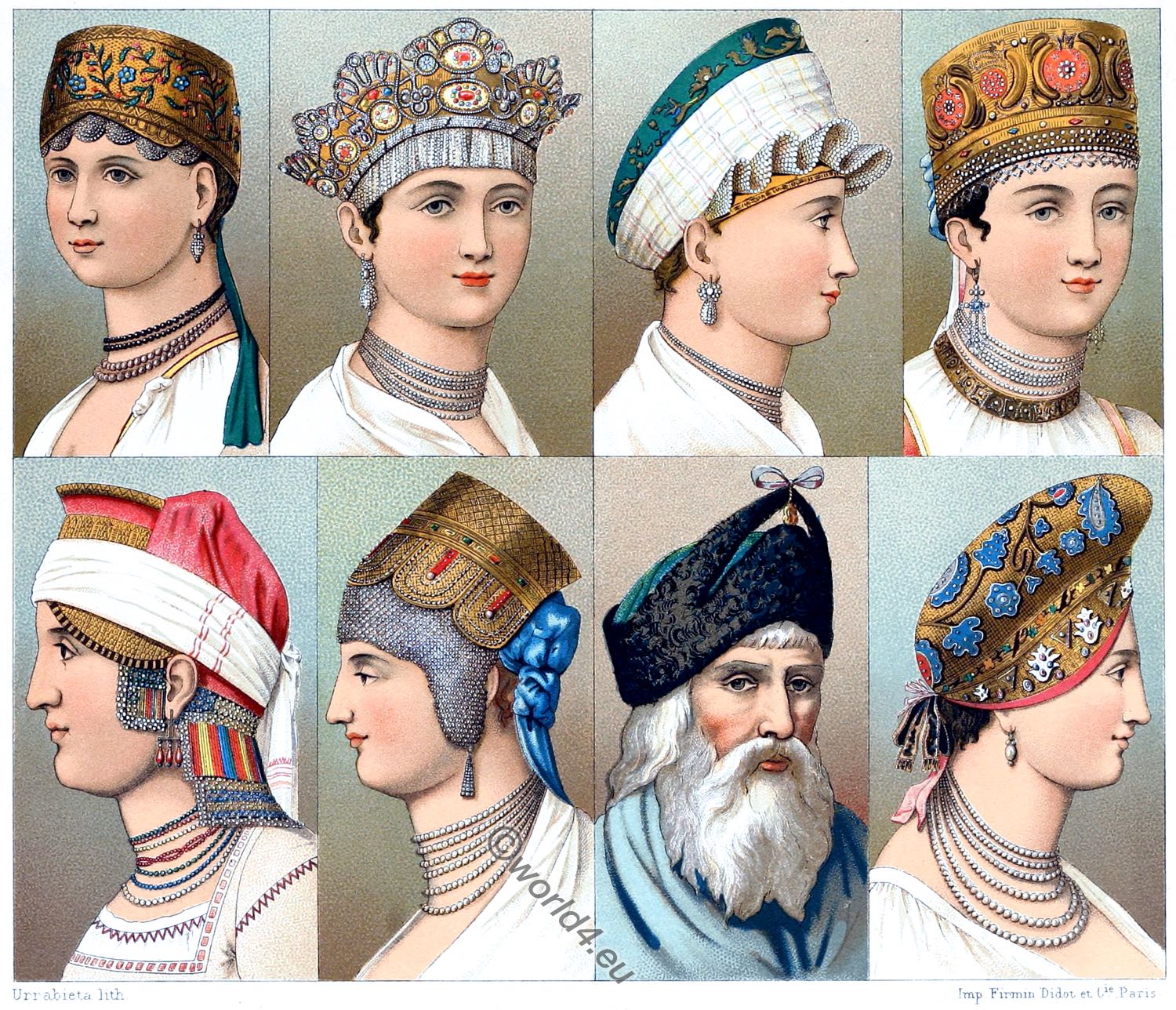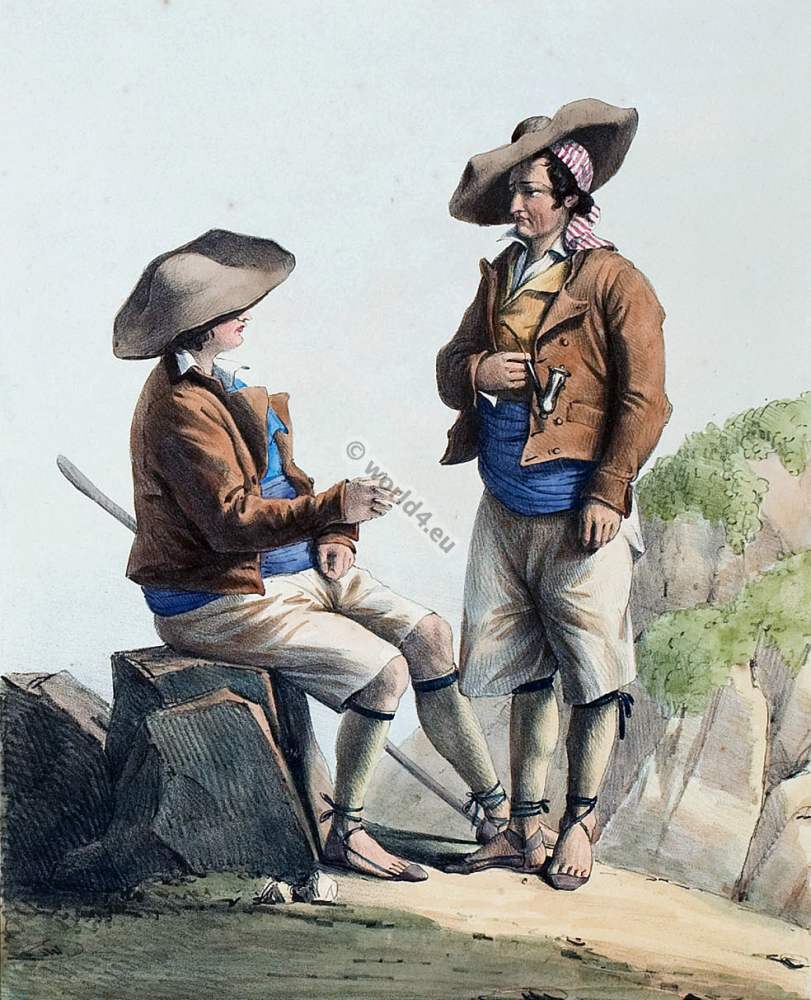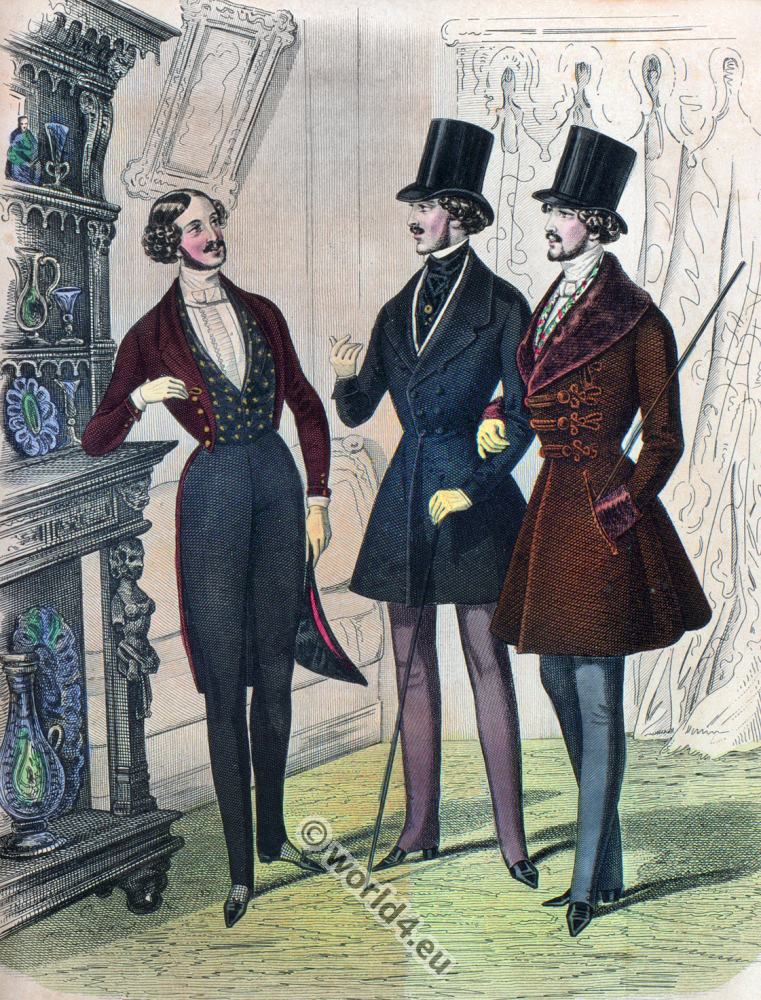FRANCE. ALSACE. – HAIRSTYLES OF THE DIFFERENT STANDS. – THE BENDEL, THE FUR CAP; 18TH CENTURY.
- Nos. 4, 6, 7, 10, 11, 13, 20 and 21.
Hairstyles of the XVII century. - Nos. 9, 12, ]4, 15, 16, 17, 18 and 19.
Details of these hairstyles. - Nos. 1, 2, 3 and 5.
Costumes of the first half of the 19th century.
The national head and hairstyles, which were regulated by luxury laws until the 17th century, were maintained after the French occupation mainly in the middle classes and peasants. In modern times they are becoming more and more lost.
BENDEL (BONNETS) IN DIFFERENT SHAPES.
- No. 4. silk cap with colourful and silver embroideries.
- No. 10 and 11. cap embroidered on gold ground, from two sides.
- No. 9 and 12. details of the embroidery. Embroidery of different colours with silver leafs; pearl trimmings in the middle and on the sides. The back part is embroidered with flowers and ornaments on red silk ground.
- No. 13. cap, entirely covered with gold filigree.
- Nos. 14, 15, 16, 17, 18 and 19. Details of the headdress.
- No. 21. seventeenth century. Person of rank with the gold embroidered cap.
THE FUR CAP.
No. 20. Mrs Marie Sabine Krezni, née Kieterin from Kornburg; 1603-1657. Fur cap. Triple neck collar.
WOMEN’S HEADDRESS.
No. 6 and 7. high hairstyles from two sides. Circular bonnet on wire frame; on the bottom cocard-like bows with a gold button in the middle.
FOLK COSTUMES OF THE FIRST HALF OF THE XIX. CENTURY
- No. 1 gardener from Strasbourg. Pink silk bonnet with big bow at the front; cut out bodice; light muslin breast cloth; blue striped skirt; big apron; shoes with silver buckles; white gloves.
- No. 2: Farmer’s wife from the Colmar area. Gold embroidered bonnet, with a bow at the back and a tulle front; bodice and skirt with white ground; large cross-knit breast cloth, the ends of which fall over a blue silk apron; shoes with rosettes; large flat straw hat with plush rosette; white gloves.
- No. 3 and 5. farmers’ wives from Kochersberg.
No. 3. catholic young girl. – The catholic women wear bright colours. Silver embroidered bonnet with a big bow. Embroidered shirt reaching to the neck; long puffed sleeves. Front laced calico bodice, floral and sequined; pink silk bows. Red, green-trimmed skirt; several different-coloured petticoats underneath. Silk scarf. Cut-out shoes. Flat straw hat with cockade and bows. - No. 5 Lutheran young girl. – Embroidered bonnet with big bow. Lye braids with black bows at the ends. Black scarf. Shirt with wide turn-down collar and puff sleeves. Green striped bodice. Green skirt with light-coloured hems. Longer petticoat. White apron. Straw hat. Small shoes with rosettes.
MODERN FEMALE HEADDRESS.
No. 8th cap with a large bow, the ends of which fall down at the back, as in the Grand Duchy of Baden. Scarf with fringes.
Nos. 1, 2, 3 and 5 from the collection of Lanté and La Mésangère, Costumes des femmes de Hambourg, du Tyrol, etc. 1827.
Nos. 4, 10, 11 and 13 and the details nos. 9, 12, 14, 15, 16, 17, 18 and 19 from the collections of Messrs Muntz, Goupil, Baur, etc. exhibited at the costume exhibition of the Union centrale of 1874.
Nos. 6, 7 and 21 after simultaneous engravings without inscription.
No. 8 after a photograph.
No. 20 after a German engraving, inscribed Georg Feniher.
See: Richard, Histoire de l’Alsace, 1835. – Piton; Strasbourg illustré, panorama pittoresque, historique et statistique, 1855.
Source: History of the costume in chronological development by Auguste Racinet. Edited by Adolf Rosenberg. Berlin 1888.
Related
Discover more from World4 Costume Culture History
Subscribe to get the latest posts sent to your email.

